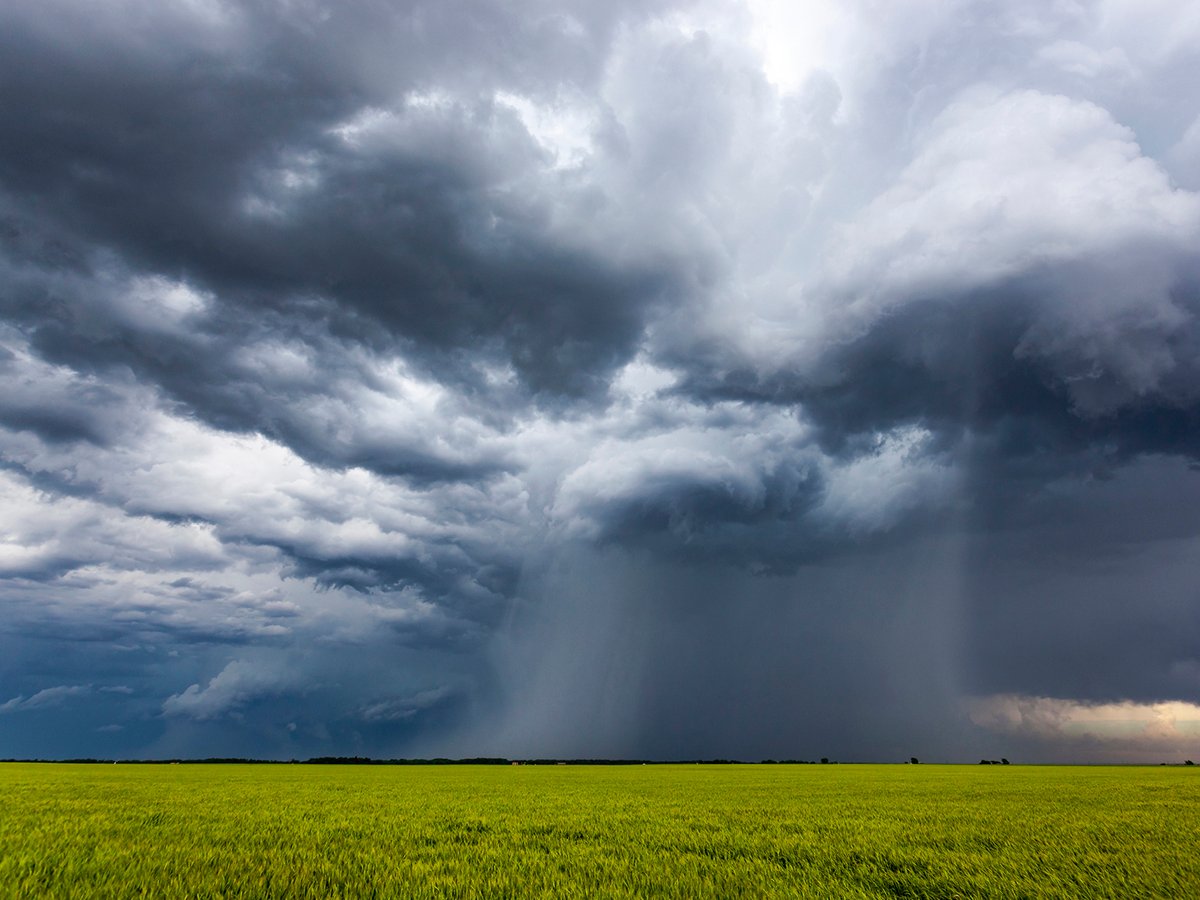CAROLINE, Alta. – A 25 percent home energy saving is possible with a good stand of trees around a farmyard.
Besides creating a warmer microclimate in the farmyard, a dense shelterbelt can also slow wind speeds of 45 km-h down to seven km-h, said PFRA agro-forester Don George. He was speaking at a Calgary meeting of the Rocky Riparian Group, which is a large volunteer agriculture group working on environmental improvement.
“That is really substantial and that is going to be noticeable,” he said.
George recommends a standard five row plan for a farm. The two outside rows should be shrubs like caragana, chokecherry, lilac or hawthorne. The two middle rows could be taller deciduous trees like green ash, poplar or maple and the last row closest to buildings should be pine or spruce. The trees should be about 30 metres from buildings.
Read Also

Extreme rain increases as planet warms
In this issue, we are going to wrap up our look at extreme rainfall by examining the different weather patterns that tend to be associated with these rainfall events.
Planted this way, the trees act like a wedge to direct the wind up and over the trees, thus sheltering the buildings.
Shelterbelts also capture carbon, reduce soil erosion, protect livestock, increase property values, provide wildlife habitat and trap snow.
The thicket helps prevent snowdrifts from blowing into the yard and blocking driveways.
Snow trapped in the trees is a good source of water. Every 100 metres of caragana can capture up to 300,000 litres of water.
Planting trees along roads also helps trap snow. Trees can be planted no closer than 45 metres from the middle of a gravel road and 90 metres from the middle of pavement.
The Prairie Farm Rehabilitation Administration distributes three to four million tree seedlings each year free of charge to bona fide farmers holding more than 39 acres. Starting next year, anyone with five acres or more is eligible for free trees.
Trees may be ordered through the internet or by contacting municipal offices. Applications have changed and orders are taken from June 1 to March 15 each year.















